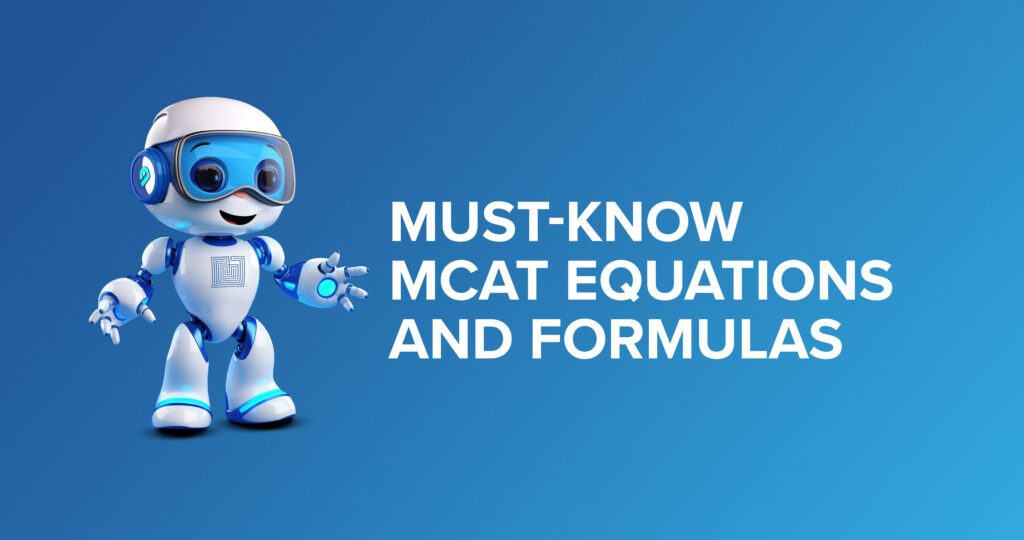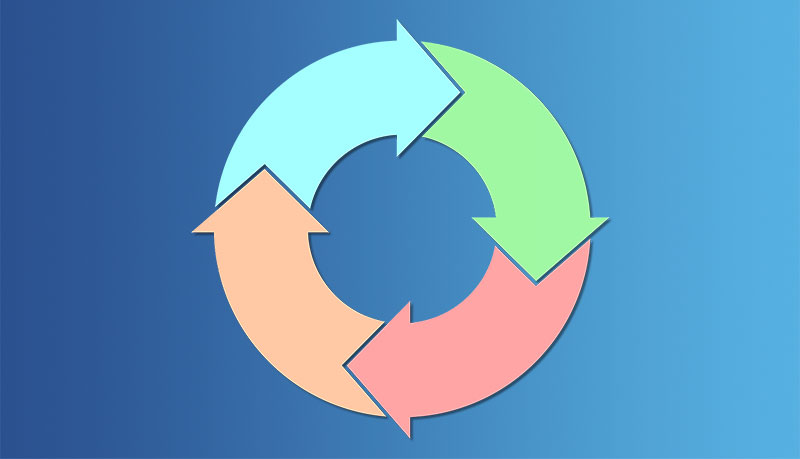
Glucogenesis Is Not Glycolysis in Reverse. Here’s Why.
Glycolysis is widely understood to be one of the most important metabolic pathways to study for the exam, but students often have difficulty studying gluconeogenesis in parallel to glycolysis. On a certain level, it can be tempting to think of gluconeogenesis as the reverse of glycolysis because glycolysis aids in glucose breakdown into two pyruvate molecules to obtain energy and feed into the citric acid cycle, whereas gluconeogenesis takes two pyruvate molecules and builds them into a glucose molecule.
On some level, this is true, and they can be considered inverse. For example, glycolysis is catabolic, while gluconeogenesis is anabolic—these reactions have opposite reactants and products, and these reactions have opposite activators/inhibitors (such as insulin and glucagon) that are further broken down into fatty acid and glycogen.
However, it’s not quite right to just think of gluconeogenesis as glycolysis in reverse, because there are some differences between the two that are important to understand.
Reason One: Gluconeogenesis Is More Specific.
First, glycolysis is an ancient metabolic pathway that is common to all forms of cellular life and can be performed by all cells to obtain energy (a net of 2 ATP per glucose & 2 pyruvate molecules). Also take into account anaerobic glycolysis, which produces two lactate molecules and 2 ATP for every glucose molecule.
In contrast, gluconeogenesis is much more specific. In humans, it is primarily carried out in liver cells, as well as to some extent in the adrenal cortex. Furthermore, glycolysis occurs entirely in the cytosol, while gluconeogenesis begins in the mitochondria and is completed in the cytosol. Gluconeogenesis also has a much more specific goal: to produce glucose to be secreted into the bloodstream when blood glucose levels are low.
Reason Two: Their Biochemical Details Are Different.
Second, the biochemical details of gluconeogenesis are different from those of glycolysis. The reason usually given for this is that gluconeogenesis needs to bypass the energetically favorable/irreversible steps of glycolysis. Due to the exergonic nature of these three irreversible steps in glycolysis, these steps cannot be directly reversed in gluconeogenesis. This statement is true, but it’s worth examining what’s going on here in somewhat greater detail. Let’s first quickly review the steps of glycolysis that gluconeogenesis bypasses:
- Step 1: glucose → glucose 6-phosphate (G6P), in a reaction catalyzed by hexokinase. In this step, an ATP is invested; more specifically, a phosphate group from ATP is transferred to glucose to form G6P.
- Step 3: fructose 6-phosphate (F6P) → fructose 1,6-bisphosphate (F1,6BP), which is catalyzed by phosphofructokinase-1. Mechanistically, this is similar to step 1; an ATP is invested, and the phosphate group is transferred to F6P to form F1,6BP. However, this is the committed step of glycolysis and is subject to especially strict regulation due to the fact that this is the rate-limiting step of the pathway.
- Step 10: phosphoenolpyruvate (PEP) → pyruvate, which is catalyzed by pyruvate kinase. This step forms ATP, is subject to regulation, and is the end of glycolysis. It generates pyruvate, which the cell can further feed into the citric acid cycle.
Note that steps 1 and 3 of glycolysis (glucose → G6P and F6P → F1,6BP) involve phosphorylation, whereas step 10 (PEP → pyruvate) generates the end product. Notice how all 3 irreversible steps are kinases—this may be helpful in memorizing the pathway. Let’s look at the various ways that gluconeogenesis differs from glycolysis, starting with the pyruvate end of the pathway.
The final step of glycolysis is the conversion of PEP to pyruvate. This step is highly energetically favorable, so the first challenge in gluconeogenesis is to bypass it to convert pyruvate to PEP. In the mitochondria, pyruvate carboxylase converts pyruvate to oxaloacetate by adding a COO- group. Oxaloacetate is briefly converted to malate for transport out of the mitochondria, where it is then converted immediately back to oxaloacetate. At this point, in the cytosol, PEP carboxykinase converts oxaloacetate to PEP. The reason for this intricate process is both because the direct conversion of PEP to pyruvate is irreversible and because the cell must avoid a futile cycle in which pyruvate from glycolysis is immediately converted back to PEP. This is why gluconeogenesis has a two-step pathway split up between the mitochondria and cytosol. The cytosol holds the phosphate pathway that can take part in the glucose breakdown. Notice how oxaloacetate is found as an intermediate of both the Krebs cycle AND this step of gluconeogenesis.
Moving upstream, in gluconeogenesis, the enzyme fructose 1,6-bisphosphatase catalyzes the hydrolysis of the phosphate group on C1 of F1,6BP, resulting in F6P. F6P is isomerized to G6P. Then, the conversion of G6P to glucose is the final step where gluconeogenesis bypasses glycolysis; in this step, glucose 6-phosphatase catalyzes a hydrolysis reaction in which G6P yields glucose production and inorganic phosphate. In contrast to glycolysis, which phosphorylates intermediates using kinases, gluconeogenesis must use different enzymes—phosphatases—to remove these phosphate residues.
Let’s take a closer look at the bypassed reactions that involve phosphorylation. In steps 1 and 3 of glycolysis, an ATP is invested in putting a phosphate group onto the substrate. This in and of itself tells you that gluconeogenesis can’t just reverse glycolysis, because doing so would mean that gluconeogenesis would itself create ATP. That would be impossible! You may remember that the electron transport chain and ATP synthase are specialized structures that allow ATP to be formed. This is a complex, energetically costly process that can’t just randomly be replicated in a metabolic pathway. Also, it contradicts the basic logic of gluconeogenesis; the goal of gluconeogenesis is not to produce energy for the cell but to increase the blood glucose level that’s circulated in the bloodstream. It is crucial to remember that 4 enzymes differ between glycolysis and gluconeogenesis: pyruvate carboxylase, PEP carboxykinase, fructose 1,6-bisphosphatase, and glucose 6-phosphatase.To summarize:
- Steps 1 and 3 of glycolysis are bypassed by gluconeogenesis because the glycolytic steps involve transferring a phosphate group from ATP, and gluconeogenesis can’t regenerate ATP.
- Step 10 of glycolysis is bypassed by gluconeogenesis to work around an irreversible reaction and to avoid a futile cycle.
The figure below compares the gluconeogenesis pathway and the glycolysis pathway. While it is certainly useful to memorize the bypasses, understanding why certain steps are bypassed will help you consolidate your knowledge.
Need More MCAT Practice Resources?
If you need additional help with glucose metabolism and glycolysis or if you’re looking for more MCAT practice, we’ve got your back (or, stomach?).
Blueprint is a leader in representative MCAT prep. The Blueprint Online MCAT Course was created by experts with 524+ MCAT scores, including MDs and PhDs. We constantly update our MCAT practice tests to reflect the latest Association of American Medical Colleges (AAMC) interface and changes. Get a free full-length test by signing up for the Free MCAT Practice Bundle.
If you need more individualized attention, our MCAT tutors provide one-on-one MCAT tutoring personalized to address your unique needs and weaknesses. What works for some may not work for all, so it’s important to find the right MCAT prep that works for you. Schedule a free consultation to start you on the path to MCAT success.
Search the Blog

Free Consultation
Interested in our Online MCAT Course, One-on-One MCAT Tutoring or Med admissions packages? Set up a free consultation with one of our experienced Senior Student Advisors.
Schedule NowPopular Posts
-
MCAT Blog What's on the MCAT?
-
MCAT Blog How to Review MCAT Full Lengths

Free MCAT Practice Account
Need great MCAT practice?Get the most representative MCAT practice possible when you sign up for our free MCAT Account, which includes a half-length diagnostic exam and one of our full-length MCAT practice exams.
Learn More







